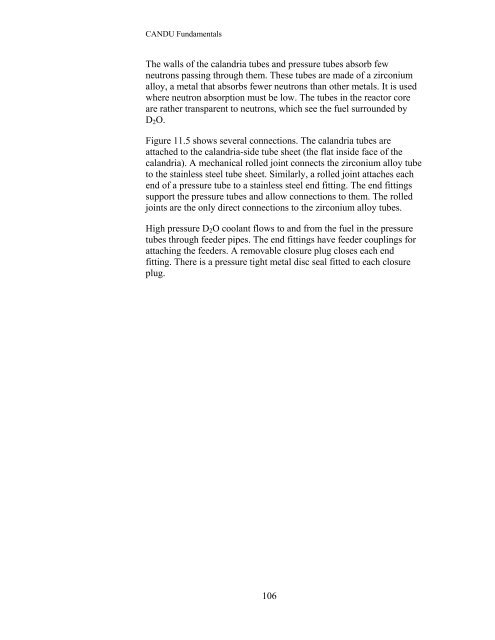11 Candu Reactor Construction
11 Candu Reactor Construction
11 Candu Reactor Construction
You also want an ePaper? Increase the reach of your titles
YUMPU automatically turns print PDFs into web optimized ePapers that Google loves.
CANDU Fundamentals<br />
The walls of the calandria tubes and pressure tubes absorb few<br />
neutrons passing through them. These tubes are made of a zirconium<br />
alloy, a metal that absorbs fewer neutrons than other metals. It is used<br />
where neutron absorption must be low. The tubes in the reactor core<br />
are rather transparent to neutrons, which see the fuel surrounded by<br />
D 2 O.<br />
Figure <strong>11</strong>.5 shows several connections. The calandria tubes are<br />
attached to the calandria-side tube sheet (the flat inside face of the<br />
calandria). A mechanical rolled joint connects the zirconium alloy tube<br />
to the stainless steel tube sheet. Similarly, a rolled joint attaches each<br />
end of a pressure tube to a stainless steel end fitting. The end fittings<br />
support the pressure tubes and allow connections to them. The rolled<br />
joints are the only direct connections to the zirconium alloy tubes.<br />
High pressure D 2 O coolant flows to and from the fuel in the pressure<br />
tubes through feeder pipes. The end fittings have feeder couplings for<br />
attaching the feeders. A removable closure plug closes each end<br />
fitting. There is a pressure tight metal disc seal fitted to each closure<br />
plug.<br />
106
















